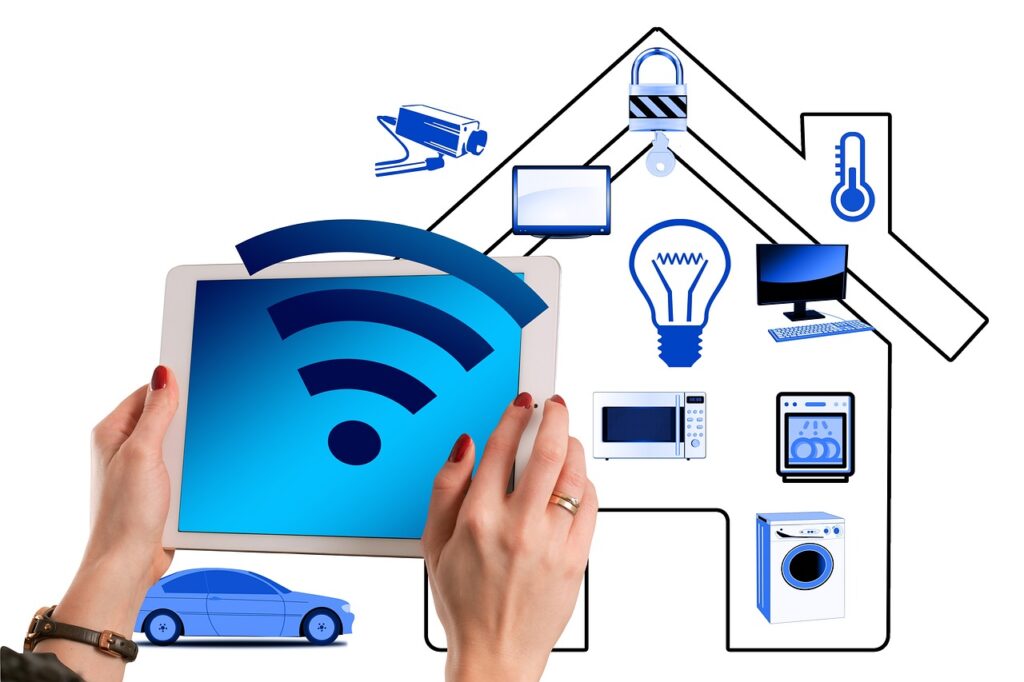Smart garage? Can garages think now? Are those robots that can transform into garages?
The modern garage has evolved beyond a mere storage space for vehicles and tools. With advancements in technology, garages have transformed into intelligent spaces that enhance home security, convenience, and efficiency.
This comprehensive guide from the folks at Lion Garages explores the world of smart garages, detailing their features, benefits, and how to set one up to complement your smart home ecosystem.
What Are Smart Garages?
A smart garage integrates various technologies to automate and control garage functions remotely. These technologies often include smart garage door openers, security cameras, lighting systems, and environmental controls, all connected through a central hub or smartphone application. The primary goal is to provide homeowners with enhanced control, security, and convenience.
Smart garage door openers are central to this setup. They allow users to open or close the garage door remotely, monitor its status, and receive alerts if the door is left open. Some models integrate with voice assistants like Amazon Alexa or Google Assistant, enabling voice-controlled operations.
Beyond door control, smart garages can include surveillance cameras for real-time monitoring, motion sensors for security, and environmental sensors to detect temperature or humidity changes. These components work together to create a secure and responsive environment.
Benefits of a Smart Garage
Implementing smart technology in your garage offers numerous advantages. One of the most significant benefits is enhanced security. With real-time alerts and remote monitoring, homeowners can ensure their garage remains secure at all times.
Convenience is another major advantage. Imagine being able to open your garage door for a delivery while you’re at work or checking if you left the door open from your smartphone. These features simplify daily routines and provide peace of mind.
Energy efficiency also improves with smart garages. Automated lighting systems can turn lights on or off based on occupancy, reducing energy consumption. Additionally, integrating environmental sensors can help maintain optimal conditions for stored items, preventing damage due to extreme temperatures or humidity.
Key Components of a Smart Garage
Several components come together to create a fully functional smart garage. Understanding these elements can help you design a system that meets your specific needs.
Smart garage door openers are the foundation. These devices connect to your home’s Wi-Fi network, allowing remote control via smartphone apps. Some models offer features like scheduling, voice control, and integration with other smart home devices.
Security cameras provide visual monitoring of your garage. Positioning cameras at entry points and inside the garage can deter intruders and provide evidence in case of incidents. Many cameras offer features like motion detection, night vision, and cloud storage for recorded footage.
Environmental sensors monitor conditions such as temperature, humidity, and air quality. These sensors can alert you to potential issues, such as freezing temperatures that could damage stored items or high humidity levels that may lead to mold growth.
Setting Up Your Smart Garage
Transforming your traditional garage into a smart one involves several steps. Begin by assessing your current garage setup and identifying areas where smart technology can enhance functionality.
Next, select compatible devices that meet your needs. Ensure that the smart garage door opener you choose is compatible with your existing garage door system. Similarly, select security cameras and sensors that integrate seamlessly with your chosen smart home platform.
Installation typically involves mounting devices, connecting them to your Wi-Fi network, and configuring settings through associated apps. Some devices may require professional installation, especially if electrical wiring is involved. Once set up, test each component to ensure proper functionality and integration.
Integrating with Smart Home Systems
A smart garage becomes even more powerful when integrated with your broader smart home ecosystem. This integration allows for centralized control and automation across various devices and systems.
For instance, integrating your smart garage with a voice assistant enables voice commands for opening or closing the garage door. You can also create automation routines, such as turning on garage lights when the door opens or receiving alerts if the door remains open for a specified period.
Compatibility is key when integrating devices. Ensure that your smart garage components support the same protocols and platforms as your existing smart home devices. This compatibility ensures seamless communication and control across your smart home network.
Enhancing Security Measures
Security is a paramount concern for any homeowner, and smart garages offer advanced features to bolster protection. Implementing these measures can safeguard your property and provide peace of mind.
Motion sensors can detect unauthorized movement within the garage, triggering alarms or notifications. Integrating these sensors with security cameras allows for immediate visual verification of any disturbances.
Smart locks add another layer of security. These locks can be controlled remotely, allowing you to grant or revoke access as needed. Some models offer features like temporary access codes, which are useful for granting entry to service providers or guests.
Optimizing for Energy Efficiency
Smart garages contribute to energy conservation efforts through automated systems and monitoring capabilities. Implementing these features can lead to cost savings and environmental benefits.
Automated lighting systems can be programmed to turn off when the garage is unoccupied, reducing unnecessary energy consumption. Similarly, integrating smart thermostats or environmental controls can maintain optimal conditions, preventing energy waste.
Monitoring energy usage through smart plugs or energy meters provides insights into consumption patterns. This data can inform decisions on optimizing appliance usage and identifying areas for improvement.
Future Trends in Smart Garages
The realm of smart garages continues to evolve, with emerging technologies promising even greater functionality and integration. Staying informed about these trends can help you future-proof your smart garage setup.
Artificial intelligence is increasingly being incorporated into smart home systems, enabling predictive maintenance and more intuitive automation. For example, AI algorithms can learn your routines and adjust garage settings accordingly.
Integration with electric vehicle (EV) charging stations is another growing trend. Smart garages can manage EV charging schedules, monitor energy usage, and even integrate with renewable energy sources like solar panels for sustainable charging solutions.
Conclusion
Embracing smart technology in your garage transforms it into a secure, efficient, and convenient extension of your smart home. From enhanced security measures to energy-saving features, smart garages offer numerous benefits that cater to modern lifestyles. As technology continues to advance, the possibilities for smart garages will only expand, making them an essential component of the connected home.

